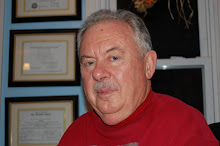The Worst Hard Time by Timothy Egan
Anyone who has knowledge of the great depression in America is familiar with the pictures taken in the Dust Bowl. The Dust Bowl began in North Dakota and extended all the way to Texas. But if you want to read the awesome story of how the Dust Bowl came into existence and the trauma it brought, you need to read Timothy Egan's The Worst Hard Time.
Timothy Egan did research throughout the Dust Bowl region finding people who had actually lived the through the Dust Bowl. His discoveries are heart-breaking. The lessons taught are important for all ages.
The conclusions of this book tell us that the Dust Bowl was the result of greed, greed by the government and greed by people who were out to make a quick fortune.
The first stage of the greed was brought on by a huge cattle ranch called XIT. The owners of the XIT were given the land on the basis of what they would do for the government in return. Overgrazing nearly destroyed this vast grassland which once had supported vast herds of buffalo as well as the Native American tribes that lived in the region. The buffalo were destroyed and the Indians driven off the land.
The next stage was to turn this vast grassland into farmland by the Homestead Act of 1865. Land that was never designed to be farmland was converted to farmland. A few years of good rains led people to believe the land would produce wheat and corn. With the onslaught of World War I, the need for grain increased and prices went out of sight. This led carpet-baggers to come to the area, plant wheat and then leave until harvest time.
The villain in this story was the steel plow that ripped up the sod. Millions of acres were plowed in hopes of getting rich. This opened the door for the Dust Bowl because the sod had held the soil in place. Now that was gone. When both Republican (Hoover) and Democratic (Roosevelt) were approached to do something, both refused to recognize how serious the problem was.
Here in eastern Kansas we have the Konza Prairie. Fortunately the desire to plow it up has been resisted. After you read The Worst Hard Time, you will understand why this rich grassland can never be plowed.
What follows is the description of the book offered by the publisher, Houghton Mifflin Books.
The devastation caused this year by Hurricanes Katrina and Rita serves as a grim reminder of the destructive power of nature and the long-term effects of a single storm. In The Worst Hard Time (Houghton Mifflin; December 14, 2005), Pulitzer Prize–winning journalist Timothy Egan brilliantly captures the untold story of the Dust Bowl, the decade of brutally punishing dust storms that ravaged the American High Plains during the Depression and became the "worst weather event" in American history, through the eyes of those who survived it.
Once one of the greatest grasslands in the world, the High Plains of Colorado, Kansas, Nebraska, Oklahoma, Texas, and New Mexico went through a bonanza of overfarming in the 1920s. When the rains stopped and the wind picked up in the early 1930s, the stripped earth began to stir and blow to devastating effect, sending millions of tons of dust across much of the nation. In the High Plains, the power of these blinding black blizzards of dust was such that it was often impossible to "see your hand in front of your face," according to one survivor.
At its peak, the Dust Bowl covered close to one hundred million acres, and more than a quarter of a million Americans were forced to flee their ruined homes. In The Worst Hard Time, Egan follows a diverse cast of individuals and families in communities across the affected region, weaving together the eyewitness accounts of survivors now in their eighties and nineties, including:
• Ike Osteen, who survives the Dirty Thirties in a home made of dirt and plank boards, with his widowed mother and eight brothers and sisters;
• Bam White and his family, Native Americans who live through the worst of the storms on the edge of town, in the shadows;
• John McCarty, a businessman, known as the Dust Bowl Cheerleader, who founds the Last Man Club, an association of people who vow never to flee;
• The Doc, a big-hearted, once wealthy man, who ends up a pauper after opening up a soup kitchen;
• The Herzsteins, a pioneering Jewish family, who try to maintain the rituals of daily life even after they lose a beloved uncle to a gunslinger;
• Hazel Lucas Shaw, who comes to the plains as a teenage bride only to see her baby girl killed by the dust.
The Worst Hard Time captures the full drama, heroism, and terror of this unwritten chapter of the Greatest Generation, a time when the simplest thing in life — taking a breath — was a threat. The book is a testament to the power of human perseverance in the face of the most wretched of conditions, as well as a reminder that the environmental catastrophe of the Dust Bowl may be only a preview of what is in store for us in our ever-warming future.

1 comment:
Hello Vagabonder,
Thanks for the review. I will get the book, and I know my daughter will like it. I recently wrote a post about global warming at my Faith Matters blog.
alterfaith.wordpress.com
Post a Comment